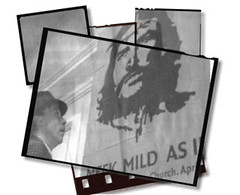
I have been spending some time with Moltmann (the writings not the person) lately, and have been really blessed by what he has to say:
"The Son of man does not rule through acts of violence and subjugation, but through the giving of himself for the liberation of men and women...the only Lord - a servant of all; the ruler of worlds - a friend of sinners and tax collectors; the universal judge - the brother of the outcasts.
This changes our whole concept of glory, greatness, achievement, and the development of power. Normally we look upwards, to someone above us, when we are impressed by his glory. But in the case of Jesus we have to look downwards. We discover his glory in his humbleness, his greatness in his poverty, his power in his self-surrender, from the wretched manger in Bethlehem to the desolate cross on Golgotha."
If that were not enough to get the cogs of your mind humming, Moltmann goes on to add:
"We should really try to stop thinking of glory simply in terms of rule. We should add the idea of beauty,too. People are supposed to obey a ruler. But beauty confers joy and allows a person to grow and develop."
Jürgen Moltmann, The Power of the Powerless. San Francisco: Harper & Row, 1983, 23-24.
















